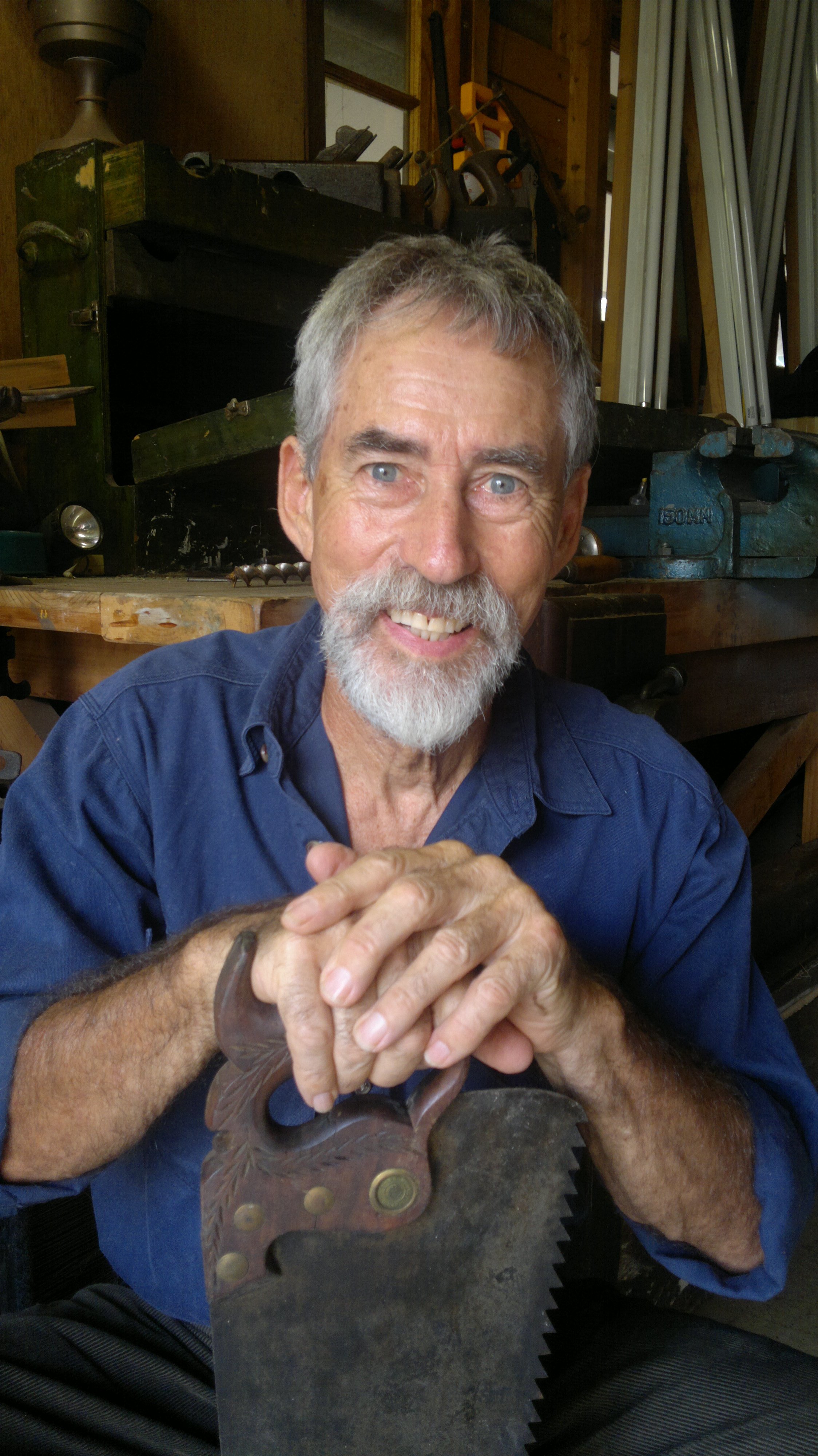 The Building of the Queensland House: a carpentry history of the Queenslander.
The Building of the Queensland House: a carpentry history of the Queenslander.
Above is the cover, illustrated and designed by John Braben, of the book, and my first blog, which gives me the opportunity of offering some information.
As the title explains, the book is a practical guide to the classic domestic architecture of the state of Queensland, the north-east chunk of Australia. It is not a pretty assembly of photogenic cupolas in garden settings, but a hands-on day-to-day diary of the blokes and their trade, cuts, bruises, falls and all. The specific type of house in question was being built from approximately 1880 to 1920, give or take a few years: this era defines the style.
No new Queenslanders, and fewer originals.
The shame is that, not only was the book not written seventy years ago, but that it was written by me. I have never built a Queensland house; it’s possible that no-one alive has. There are poor copies, on skinny steel posts, with rooms lacking proper height, but no proper Queenslanders. I have built every part, but not the whole, if that makes sense. The shame is that even now the character of the old suburbs is degrading as more and more old places are either demolished or used as stage-sets for outrageous ‘statements’ in steel and glass. A French, German or English suburb of typically indigenous architecture would be preserved to the last nail.
Queensland without its weatherboard cottages would be the bland featureless anonymity of the new housing estates. Have you seen the number of traditional Queensland houses legally demolished every year as a result of zoning decisions made decades ago? Each unit block occupies land pioneered by the early carpenters, the builders of our original domestic architecture. In any other country this heritage would be treasured rather than trashed for the slums of the future.
So the book shines a light on the work and materials that go into The Building of the Queensland House, in the hope that those who love the wood-and-corro cottages are not in the minority. There are three parts; the historic setting of the building site a hundred years ago, the carpentry and construction details necessary for accurate restoration, and much advice on enlarging a small cottage to a grand design without wrecking the neighbourhood.
Below: me, Andy, feeling sore……

John has many fine illustrations throughout: the full cover above, for example, shows a bullock-team delivering the stumps to the site in the Brisbane suburb of Red Hill, around 1900, with the scaffolding of the future St Brigit’s church in the background. Dozens of construction-drawings and sections spatter the text, and pages of photographs of all the tools of the trade show what went into the chippies’ kit, box, and bast. Stories and mishaps of the trade, pathetic jokes and instructions on avoiding injury add some Vegemite to the dry bread of scarfs, mortises and rebates.
To my surprise and pleasure, the book is nearly sold out, thanks to the support of local booksellers like Black Cat in Paddington, the BookBank in Toowong, and the unlikely but excellent Wooloongabba Antiques Centre. An attack of hubris has pushed me, for better or worse, to a Second Edition, which if successful will earn me a few dollars a copy, rather than the $1.50 loss that I nevertheless consider worthwhile for the fun of being a Norther. Or, a garage full of expensive wood-pulp. The second edition, to help sales, will be called ‘Wood: fifty shades of brown’.
The books are available from;
The BookBank, Toowong, 07 3870 0050……..Sad note: closed. Hopefully to re-open at a new location.
Wooloongabba Antique Centre 07 3392 1114
Paddington Antique Centre 3369 8088
New Farm Editions, 07 3254 2122
River Bend, Bulimba 07 3899 8555 has one copy which they can neither find nor, obviously, sell. Not available from here, but you could try.
Avid Reader, West End 07 3846 3422
Folio, Brisbane City 07 3221 1368
Timber Qld. Fortitude Valley, 073358 7906
New Farm Editions, 07 3254 2122
Books of Buderim, 07 5445 1625
Nook and Cranny, Goondiwindi, 07 4671 5690
Berkelouws, Eumundi, 07 5442 8366
The Station Store, Longreach, 07 4658 2006
The Queensland Museum Shop, Brisbane, 07 3840 7729 Mary Who,Townsville,07 4771 3824
Maleny Bookshop, 07 5494 3666
Ideology, Banyo, 0402 511 342
The State Library of Queensland Shop, 07 3840 The Restoration Station Waterworks Road Ashgrove 3366 5855 Paddington Hardware
 Here are some illustrations from the book, a few: there are very many drawings, plans, elevations, sections and photographs from life and from hundred-year-old books dealing with carpentry and allied business.
Here are some illustrations from the book, a few: there are very many drawings, plans, elevations, sections and photographs from life and from hundred-year-old books dealing with carpentry and allied business.
(MYSTERIOUSLY, THESE ILLUSTRATIONS HAVE DISAPPEARED FROM THE BLOG: WHY?)
Since the above info, and the extended list of kind booksellers, the second edition is now available and trickling out into the world.
The new book has an extra chapter on ‘Maintenance’, more illustrations, additions, and excellent drawings by John Braben. Most of the embarrassing typos are expunged, though inevitably new ones appear. Bugger.
When I held the new edition, I was puzzled by the fact that despite all the extra pages the book was exactly the same thickness as the first, with the same heavy quality stock used: the reason, thinner paper. A weightier book, though, by 40 grams or so. Same price.
The printer is local, not overseas: Clark & Mackay in Rocklea, Brisbane, who did wonders with my typesetting and produced the second edition, from start to finish, in a fortnight. I believe in supporting Queensland independent businesses, which is why the book is only available from shops.
The bookshops listed above have been very kind to the book, promoting and displaying it where possible. Some have featured ‘meet the author’ events which I find scary but good fun; interesting people turn up with insightful queries, and knowledge is gained all round.
My pallet-loads of the second edition are slowly dwindling as a steady flow stocks shelves around Queensland; as yet no shop in the other states has chanced to sell this admittedly parochial work, but please call me on 0427 42 43 40 if you’re interested.
Update June 2014
The independent bookshops above have been very loyal, with regular orders coming through. The 2nd edition is half sold and my printing costs have been well covered. Sales are never going to be more than pocket-money, but here’s my problem: there is no slowing-down of orders as I expected, neither is there an encouraging surge in popularity, so, when this printing runs out, do I go to the great expense of a 3rd edition? Can I afford it?
A 3rd print would be fun, because there’s more information accumulated that I must include, and more essential Braben illustrations. Could I afford to do it, and if done, would the small-but-steady sales continue? Or would I be stuck with a very expensive pile of books? And a small run is not the answer, because the cost is very high; the more, the cheaper. An acceleration of sales would give me the green light!
This I suppose is the quandary of the publishing industry, in miniature, for which I have great sympathy.
It is gratifying to get feedback from interesting and unexpected sources. Uni students, to whom the book has relevance in their course, ditto journalism students, young carpenters finding info non-existent in the current trade, bookshops tell me of overseas requests, particularly from Black Cat in Paddington, Brisbane. There has been interest from architects who have been most respectful to a lowly chippy. SAD NOTE to the foregoing: Black Cat has now closed, beaten by the congestion and lack of parking. It’s ironic that the growing popularity of the Paddo main drag has actually resulted in the closure of many shops, and if you’re on a mission to get a book for a present, no chance, it’s chokka.
But new outlets appear, and Jimmy Poulos from the magnificent Restoration Station on Waterworks Rd in Ashgrove now stocks the book, though the proprietor himself is thoroughly expert in Queensland House architecture.
I’m answering my own questions here; there should be a 3rd print!
May 2015 Well the 2nd edition is getting near the end; the last boxes on the last pallet are dwindling. Though another, enlarged edition would be great to publish, the small but consistent sales mean boxes of books occupy space for months and months, and every delivery is usually ten or so books, occasionally a box. If the orders would stop I’d feel resigned to no new edition, but they don’t stop! And the constant dripping is painful!
What to do? It’s still a quandary. Well, since writing this, I had to make a decision.
Update October 2015
In the last couple of months something has happened, and the remaining books have been selling at record speed: I have no idea why. So a third edition is ready for printing, despite the huge cost. It takes an awful number of sales before I break even, that’s the problem. Eventually I make a quid, but that seems to get lost in the bills that pile up in the mail: a lump sum is useful, eh.
In a way I’m glad, because there is a heap of stuff missing from the previous editions that really needed to go in. (The entire chapter on ‘Steps’ is re-written, plus more info, illustrations and drawings from John) This means extra pages and cost, of course, weight and thickness too, so extra postage, but it is worthwhile.
Sadly, bookshops are still closing, but the remaining ones are hanging in and benefiting from the extra trade. Because of its content, hardware shops are now stocking the book, which is marvellous; who’d have thought?




